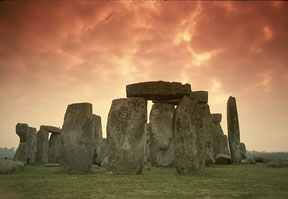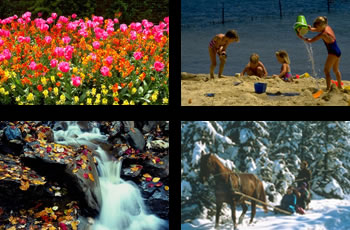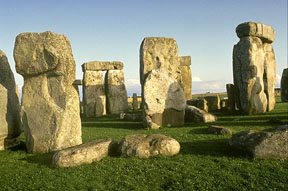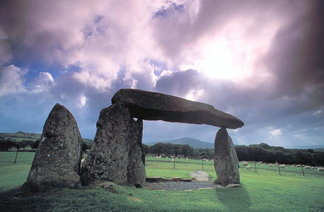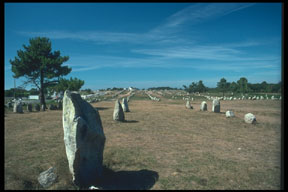Click on image for full size
Image courtesy of Corel Photography.
Archeoastronomy
"The movements of the heavenly bodies are an admirable thing, well known and manifest to all peoples. There are no people, no matter how barbaric and primitive, that do not raise up their eyes, take note, and observe with some care and admiration the continuous and uniform course of the heavenly bodies." - Bernabe Cobo (1653)
From the beginning, man has observed the heavens. Early man observed the heavens because the Sun, Moon and stars gave indication of coming seasons to farmers and hunters. The sky aided in navigation especially for nomads and sailors. The sky provided a clock to measure the time in a day. And many ancient civilizations thought the sky gave signs of life, health, war, earthquakes, the fate of kingdoms...and more.
The new field of archeoastronomy has blossomed since its beginnings in the 1960s discoveries at Stonehenge, the world's most famous megalithic structure. Archeoastronomy has been called the 'anthropology of astronomy' to distinguish it from the history of astronomy. This means that archeoastronomy pays attention to the astronomical practices, celestial lore, mythologies, and religions of ancient cultures. It sets to find out just how astronomy fit into a certain culture's life.
And so it touches on ancient calendar systems, concepts of time and space, mathematics (especially counting systems and geometry), navigation, and urban planning too. Archeoastronomers will look at drawings and writing left by a civilization. They will look at architecture, especially to see if the buildings or megaliths have any orientations towards the Sun or Moon or even Venus. The most common orientation is to look for alignment with sun rise on the date of a solstice.
Archeoastronomy is fascinating because it spans so many fields. It has at times suffered because it has involved more enthusiasm than evidence. But organizations such as ISAAC (the International Society for Archeoastronomy and Astronomy in Culture) have been founded to promote professional standards within the field.
Journey through many topics in archeoastronomy by choosing which way to start your journey:
 Journey through Time
Journey through Time
 Journey by Region
Journey by Region
 Meet the People Involved
Meet the People Involved
 Just Look at Megaliths!
Just Look at Megaliths!


